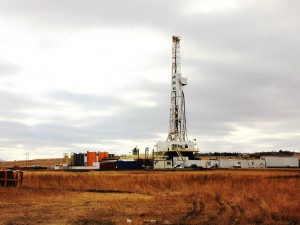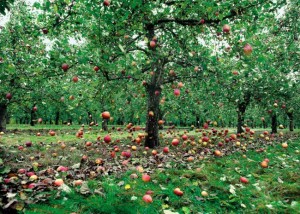Martin Freeman of leading UK radon specialists PropertECO offers a balanced view on the impact that fracking activity will have on local radon levels in buildings
With the prospect of hydraulic fracturing (Fracking) being given the go-ahead, there is an understandable concern about environmental impact and possible unintended side effects.
 Fracking is used to extract shale gas from deep down. Shale gas is seen as a valuable prospective fuel source that has the capacity to bring down energy costs for homeowners and industry, reduce dependence on foreign energy supplies and thus benefit the economy and national security. The United States has seen a transformation of its energy costs since going hell-for-leather on shale gas extraction, having sunk over 40,000 wells in the last year or so. Americans have seen the real financial benefit of falling energy bills and attribute their economic recovery in part to their new energy source. So it looks likely that fracking will become a reality as a regular activity in various parts of the UK.
Fracking is used to extract shale gas from deep down. Shale gas is seen as a valuable prospective fuel source that has the capacity to bring down energy costs for homeowners and industry, reduce dependence on foreign energy supplies and thus benefit the economy and national security. The United States has seen a transformation of its energy costs since going hell-for-leather on shale gas extraction, having sunk over 40,000 wells in the last year or so. Americans have seen the real financial benefit of falling energy bills and attribute their economic recovery in part to their new energy source. So it looks likely that fracking will become a reality as a regular activity in various parts of the UK.
But there are unknowns and a growing debate in which it becomes increasingly difficult to cut through the fog of the war of words between the ‘for’ and ‘against’ camps. Here, we try to give some balance to one aspect: will fracking cause increased levels of radon in buildings or increase the number of buildings that have dangerous levels of radon in them? This is an important consideration because radon is the second highest cause of lung cancer after smoking and currently kills around 2000 people in the UK each year.
Fracking involves the hydraulic fracturing of the geology by creating pressure deep under ground. Two earth tremors in 2011 near Blackpool were attributed to fracking. Proponents of fracking are quick to point out that these tremors were minor, of just 2.3 magnitude, picked up by instrumental means and rather less than tremors that have occurred from the collapse of historic mine workings.
They suggest that a new ‘traffic light’ procedure system of seismic monitoring in micro-wells will avoid risks from tremors and are of the opinion that, as the hydraulic fracturing usually occurs between 3-4 kilometres under ground, there is isolation from impact on the surface.
Those who hold concern about unintended consequences of fracking focus on the method and purpose of the operation: to fracture the geology to release shale gas which is then substantially captured at a single point, at the annulus of the well deep in the ground. Their concern is that a deliberately created substantial geological disturbance may create pathways for the release of other gases, including radon. Such releases would not necessarily be collected with the shale gas but will have new pathways to reach the surface. It is suggested that the very depth of the wells and the fracturing may have the effect of producing a cone effect of emissions causing a wider area to be at risk at the surface the deeper you fracture in certain types of geology.
The validity of the various views is hard to establish at this early stage; the customary default position of regulatory authorities is: “There is no scientific evidence…..” to either establish a link between or to establish that so & so is or is not the case. This position cannot safely be adopted until more knowledge has been gained through experience in time and a balanced precautionary approach is needed.
The effects of radon are already widely documented and the link between radon exposure and lung cancer deaths is proven. Radon kills and its incidence in buildings should be reduced, something that government departments, regulators and industry are working towards achieving. The radioactive gas comes from the soil and when it enters building it causes a serious health risk if it accumulates to excessive levels. The amount of radon in a building is influenced by a combination of the local geology beneath it and the pathways for the gas. A reasonable person may suppose that deliberate disturbance of geology could result in changes to the local geology beneath buildings in the area of fracking which could in turn cause them to become affected by increased radon emissions.
the link between radon exposure and lung cancer deaths is proven. Radon kills and its incidence in buildings should be reduced, something that government departments, regulators and industry are working towards achieving. The radioactive gas comes from the soil and when it enters building it causes a serious health risk if it accumulates to excessive levels. The amount of radon in a building is influenced by a combination of the local geology beneath it and the pathways for the gas. A reasonable person may suppose that deliberate disturbance of geology could result in changes to the local geology beneath buildings in the area of fracking which could in turn cause them to become affected by increased radon emissions.
Put simply, if unscientifically: if you shake a fruit tree, you can expect some fruit to fall from it.
Since the only way to know if a building is affected by radon is to test the building (radon cannot be seen or smelt), it seems reasonable to suggest that those who are concerned about fracking in their area causing radon intrusion into their home or workplace should test their building for radon before fracking commences. If there is a radon problem

already, this pre-dates any fracking but should still be mitigated. Regardless of whether or not there was an initial problem (and whether any mitigation work to the property was carried out), repeat testing should be conducted at the property after the fracturing has been done and the wells have been sunk in the area.
If this becomes standard practice, local resident groups may wish to pool their findings to establish a probability as to whether the gas extraction activity has created a new problem or exacerbated an existing one. Because radon testing is remarkably inexpensive and simple (click here for details) this seems to be the best course of action in adopting a precautionary approach for the present until sufficient data have been accumulated to define exactly what side effects, if any, occur.
On matters of radon: TO TEST IS BEST
 Martin Freeman is Managing Director of Bath-based propertECO.
Martin Freeman is Managing Director of Bath-based propertECO.
Martin has been at the forefront of the radon industry since the early 1990s, when he was the initiator of the industry technical and self-regulatory body, The Radon Council, of which he is currently Technical Affairs Spokesman.
Martin has a strong personal interest in radon, and has fought for many years for the hazard to receive more attention amongst Government, professionals and the general public. He has represented the UK at international conferences on the subject, and has been involved in consultations with some of the world’s leading specialists in the field.
